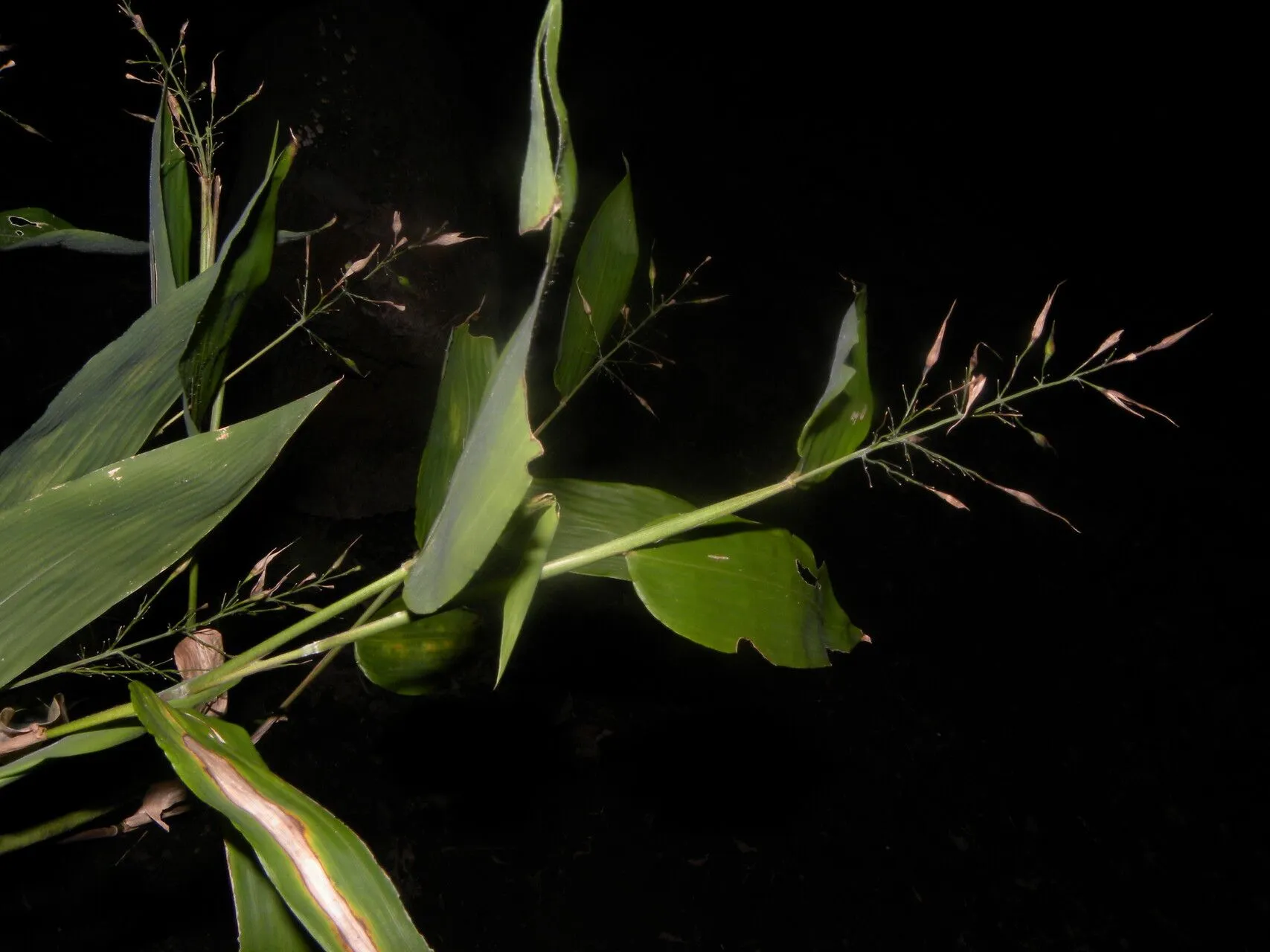
Author: L.
Bibliography: Syst. nat. ed. 10, 2:1261. 1759
Year: 1759
Status: accepted
Rank: species
Genus: Olyra
Vegetable: False
Observations: Mexico to Trop. America, Trop. Africa, Comoros, Madagascar
Carrycillo, scientifically known as Olyra latifolia, is a notable plant species within the Poaceae family. Originally described by Carl Linnaeus in 1759 in the 10th edition of his Systema Naturae, this species has garnered attention for its widespread presence and ecological significance.
Native to a broad range of tropical regions, Carrycillo can be found thriving in diverse habitats stretching from Mexico through Central and South America to Tropical Africa, including Madagascar and the Comoros islands. This extensive distribution highlights its adaptability to various tropical environments.
Olyra latifolia is characterized by its broad leaves, which serve as a distinctive feature facilitating its identification in the wild. The plant often grows in dense thickets, contributing to the understorey vegetation in many tropical forests. Its presence provides essential ecological functions, such as habitat and food sources for various fauna, thus playing a crucial role in maintaining biodiversity within these ecosystems.
In addition to its ecological contributions, Carrycillo holds cultural and economic importance in several of the regions it inhabits. While less commonly exploited on a commercial scale compared to other members of the grass family, its adaptability and resilience make it a subject of interest for studies in plant evolution and environmental adaptation.
Despite its hardiness, Carrycillo faces challenges from habitat destruction and environmental changes in many parts of its range. Conservation efforts to preserve tropical forests indirectly support the sustenance of Olyra latifolia and the myriad of life forms dependent on these critical ecosystems.
Through ongoing research and conservation initiatives, the understanding and appreciation of Carrycillo will continue to grow, reflecting the intricate connections between nature and human activity across the tropical landscapes it calls home.
Por: taquara, taquarí-mole
En: Carrycillo, Marsh-marigold
Fr: Calumet
Pt: Taquara, Taquarí mole, Taquarí-mole
Es: Trompillo
Taken Aug 27, 2016 by Nelson Zamora Villalobos (cc-by-nc)
Taken Dec 17, 2019 by Herwig Mees (cc-by-sa)
Taken Jul 2, 2022 by ANA ALTAMIRANO (cc-by-sa)
Taken Apr 17, 2019 by OTS – J. González (cc-by-nc-sa)
Taken Aug 22, 2019 by Serge Ciccone (cc-by-sa)
Taken Nov 27, 2014 by Nelson Zamora Villalobos (cc-by-nc)
Taken Sep 29, 2015 by Nelson Zamora Villalobos (cc-by-nc)
Taken Sep 29, 2015 by Nelson Zamora Villalobos (cc-by-nc)
Taken Apr 29, 2015 by OTS – Oviedo-Brenes, Federico (cc-by-nc-sa)
Taken Apr 17, 2019 by OTS – J. González (cc-by-nc-sa)
Taken Mar 3, 2017 by OTS – Oviedo-Brenes, Federico (cc-by-nc-sa)
Taken Mar 3, 2017 by OTS – Oviedo-Brenes, Federico (cc-by-nc-sa)
Taken Mar 3, 2017 by OTS – Oviedo-Brenes, Federico (cc-by-nc-sa)
Taken Mar 3, 2017 by OTS – Oviedo-Brenes, Federico (cc-by-nc-sa)
Taken Mar 3, 2017 by OTS – Oviedo-Brenes, Federico (cc-by-nc-sa)
Taken Sep 29, 2015 by Nelson Zamora Villalobos (cc-by-nc)
Taken Aug 15, 2014 by Nelson Zamora Villalobos (cc-by-nc)
Taken Sep 29, 2015 by Nelson Zamora Villalobos (cc-by-nc)
Taken Sep 29, 2015 by Nelson Zamora Villalobos (cc-by-nc)
Taken Aug 27, 2016 by Nelson Zamora Villalobos (cc-by-nc)
Taken Aug 27, 2016 by Nelson Zamora Villalobos (cc-by-nc)
Taken Aug 15, 2014 by Nelson Zamora Villalobos (cc-by-nc)
© copyright of the Board of Trustees of the Royal Botanic Gardens, Kew.
© copyright of the Board of Trustees of the Royal Botanic Gardens, Kew.
© copyright of the Board of Trustees of the Royal Botanic Gardens, Kew.
Growth habit: Graminoid
Family: Myrtaceae Author: (F.Muell.) K.D.Hill & L.A.S.Johnson Bibliography: Telopea 6: 402 (1995) Year: 1995 Status:…
Family: Rubiaceae Author: Pierre ex A.Froehner Bibliography: Notizbl. Bot. Gart. Berlin-Dahlem 1: 237 (1897) Year:…
Family: Sapindaceae Author: Koidz. Bibliography: J. Coll. Sci. Imp. Univ. Tokyo 32(1): 38 (1911) Year:…
Family: Asteraceae Author: A.Gray Bibliography: Pacif. Railr. Rep.: 107 (1857) Year: 1857 Status: accepted Rank:…
Family: Fabaceae Author: Medik. Bibliography: Vorles. Churpfälz. Phys.-Ökon. Ges. 2: 398 (1787) Year: 1787 Status:…
Family: Aspleniaceae Author: (Cav.) Alston Bibliography: Bull. Misc. Inform. Kew 1932: 309 (1932) Year: 1932…